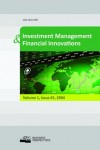Assessing the performance of American and European Leveraged Exchange Traded Funds
Assessing the performance of American and European Leveraged Exchange Traded Funds
Author(s): George Tsalikis, Simeon PapadopoulosSubject(s): Economy, International relations/trade, Fiscal Politics / Budgeting
Published by: ТОВ “Консалтингово-видавнича компанія “Ділові перспективи”
Keywords: leveraged ETFs; volatility; compounding effect; tracking error; price deviations;
Summary/Abstract: Leveraged Exchange Traded Funds (ETFs) (LETFs) are a recent and highly successful financial innovation; yet, investors and several studies criticized them for not performing as advertised, especially in the long term. Τhis paper discusses their unique characteristics and their path-dependent price dynamics, which may result in unexpected returns. Furthermore, the authors evaluate the performance of a large sample of European and American leveraged ETFs since each fund’s inception and show that they perform as intended for daily holding periods. Leveraged ETFs are also successful in delivering the promised performance over holding periods of up to one week, their performance starts to deviate when the holding period increases to one month. Empirical evidence suggests that bear (short) ETFs deviate from their target return more quickly than their bull (long) counterparts as the holding period lengthens. A possible explanation for this is that transaction costs, which are related to daily rebalancing activity, are higher for bear funds. When comparing the daily performance of European vs American funds, the authors find them both to be equally efficient in replicating their benchmarks, although European leveraged ETFs are much smaller in their Assets Under Management (AUM) compared to US LETFs.
Journal: Investment Management and Financial Innovations
- Issue Year: 15/2018
- Issue No: 2
- Page Range: 165-182
- Page Count: 18
- Language: English

